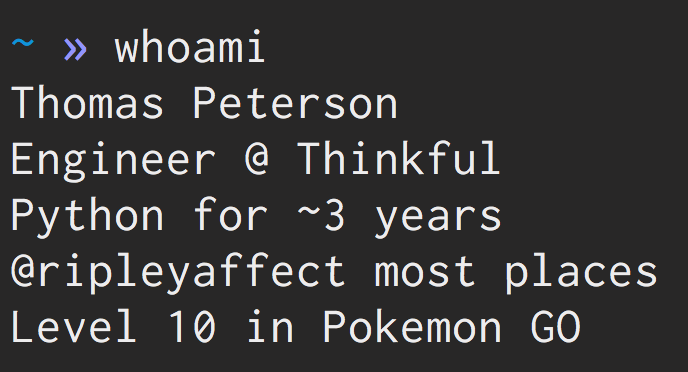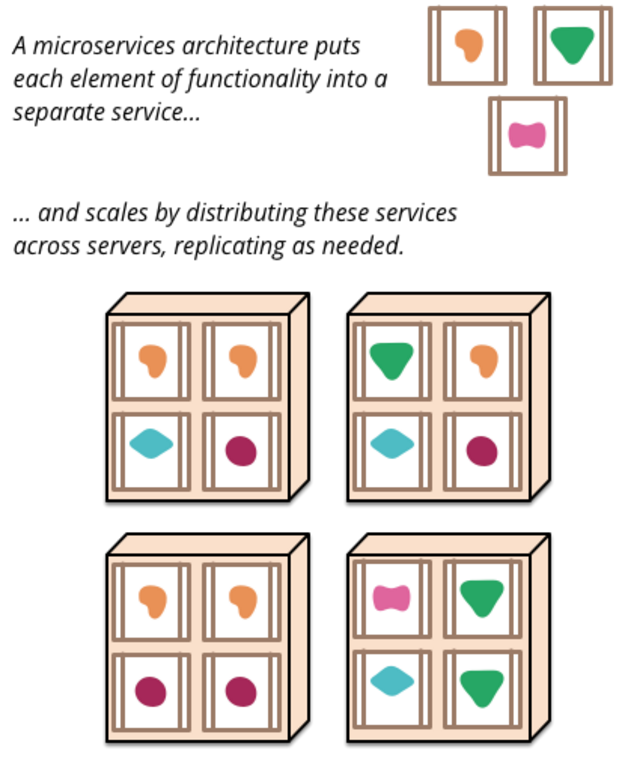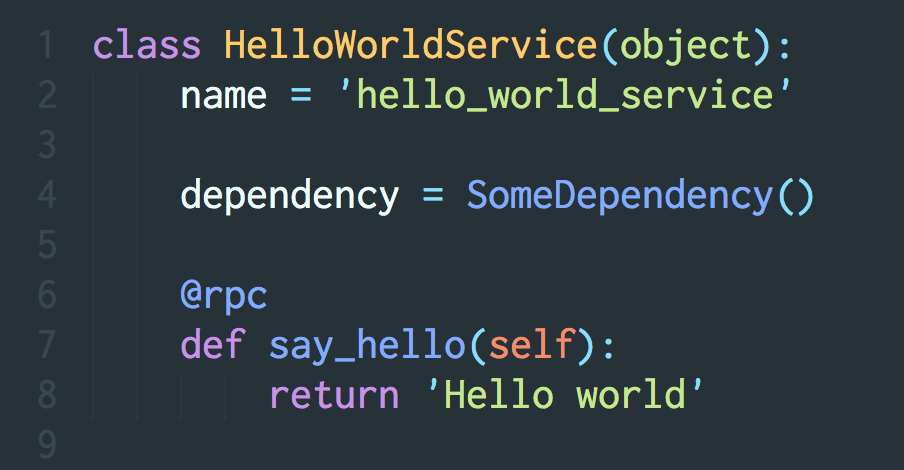Microservices with Nameko

An Example Webapp
- Client-side code (JavaScript)
- A data store (ex. mySQL server)
- Backend app
- Routing
- HTTP, etc Requests
- API to expose data
- Database calls
- Authentication
The Monolith
Pros
- Easy access to other code
- Centralized models in single data store (easy to backup)
- Lower devops overhead
Cons
- Scaling one thing == scaling everything
- Easy to end up with "spaghetti" code, with tangled dependencies and tight coupling, so can be dangerous to change or upgrade.
- Can have long deploy cycle

Microservices
- Small, isolated functionality
- Independently deployable, upgradable, scalable
- Functionality exposed over network layers (HTTP, RPC)
- Decentralized data stores (many different databases e.g.)
- Focus on service / developer / team independence

Microservice Complexity
- Complexity doesn't disappear...it relocates
- More complex with microservices:
- Authentication
- Devops: Provisioning and deployment
- Speed of calls (local vs. remote)
- Managing backups
- Service discoverability
Nameko
A python framework for creating microservices
- Library of utilities for building and running microservices
- CLI for easily running and interacting with services (nameko run / shell)
- Way of thinking about dependencies and application logic that encourages microservices approach
Nameko Services
Microservices are classes with:
- a "name" attribute
- dependency attributes
- methods with entrypoint decorators


Wait...how does the client actually call the service?
A message broker implementing the Advanced Messaging Queue Protocol (AMQP), an open messaging protocol.


Don't run away, Nameko handles the RabbitMQ bits
Namenkolature
Entrypoint: Exposes a method, often by monitoring an external entity (e.g. a queue)
Dependencies: "Gateways" to other code, not managed by the service (other services, databases, APIs)
Workers: Instance of a service class. Dependencies are replaced with result of `get_dependency`
Example 1: HTTP
- GET and POST methods supported
- Decorator takes a method and route, with variables
- Multiple decorators can be placed on the same method
- Built on top of Werkzeug (request / response objects)
Let's try it!
Example 2: RPC
- Stands for "Remote procedure call"
- Nameko implements RPC over AMQP
- rpc decorator: exposes method
- RpcProxy: easily inject other rpc-exposed dependency
- ClusterRpcProxy: allows non-nameko clients to make rpc calls to a cluster
Let's try it!
Example 3: Events
- Publisher / Subscriber (Pub / Sub)
- Event gets "dispatched" and 0 or more subscribers pick it up
- EventDispatcher: dependency helper to easily dispatch events to subscribers
- event_handler decorator: subscribes an endpoint to an event from a dispatcher service
- event_dispatcher: for non-nameko clients
Let's try it!
Example 4: Timer
- Want to do something every 3 seconds forever? @timer's got your back!
- timer decorator: runs a method (e.g. pinging a server) at a specified interval
Let's try it!
"Great! How do I move all the things to microservices?"
Microservices not recommended...?
- Microservices are new and need a particular amount of operational freedom ("devops culture").
- They can easily lead to systems that are just and coupled and complex as monoliths
Do Try this at Home
- Play around with Nameko / microservices
- Next time there's something that benefits from being a service, consider building it as one or moving it
- Using a library you want to isolate or can't upgrade
- Isolating interaction with a third party
- Want to try a new data store for some benefit it provides
Questions
Code available on GitHub
ripleyaffect/nameko_examples
Microservices with Nameko
By Thomas Peterson
Microservices with Nameko
- 2,835